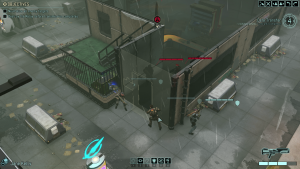Turn-based Strategy
During my ongoing literature review I often discover interesting facts about things I’ve never thought about. Sometimes I can connect these facts with my own observations: The result is mostly a completely new idea why things are as they are. Maybe these ideas are new to you, too. Therefore I’ll share my new science based knowledge with you!
This week: This time, I analyze the challenging gameplay of XCOM 2.
Aside from realistic simulations, turn-based strategy games (TBS) are my favorite type of computer games. As a TBS game has no time constrains for a player’s turn, I can thoroughly plan my next steps by analyzing the current situation and evaluating all my available options. Once I have found a good strategy, I can start to realize my plan by using all the actions of my units during the current turn.
In addition, a TBS game also provides a lot of surprises that can completely neutralize my initial plan by suddenly adding an unexpected enemy to the equation. This is, however, not a frustrating thing as it is really fun to adjust a strategy based on the development of a fight. In the end, a player has to be very flexible and accept the fact that even the best strategy can have a major flaw.
Recently, XCOM 2, the successor of XCOM – The Enemy Within, was released. Both games are TBS games and put the player in charge of a small organization that tries to defend the Earth against an alien invasion. Aside from managing the XCOM heardquarters by making important decisions, such as choosing future research projects and assigning new abilities to the soldiers, the player tackles difficult missions that can only be won if the player thoroughly plans the next steps and effectively combines the soldiers‘ abilities.

Revealing a new group of enemies.
For this purpose, the player sees the environment from an aerial perspective. However, the player can only see what the own soldiers are seeing. In this case, the player has to scout the environment carefully by sending the own soldiers from cover to cover in order to not expose them to a potential enemy that might be hidden in the shadows. Once a group of enemies is revealed, they will take cover as well. At this point, the player is challenged to move the own soldiers into positions from where they can flank the enemy or remove some of the enemy’s cover to expose them. This can be done by combining the different soldiers‘ abilities. For instance, one soldier can throw a grenade to remove an enemy’s cover. Subsequently, a second soldier can take out the exposed alien.
A soldier can belong to one of four different classes that allow further customization by unlocking skills from a skill tree after a soldier has accumulated enough experience points. The available talents during a mission dramatically influence a player’s tactic. For instance, the player can decide if a specialist can heal others or gets an additional attack. Furthermore, as a soldier can execute only two actions per turn, the player has to be very careful not to accidently expose a soldier to an enemy. Finally, soldiers and enemies can be on overwatch which will let them automatically attack if an enemy moves into their line of sight.
In the end, the player has to be very careful during a fight as the enemy tries to flank the player’s soldiers as well. In this case, the player has to constantly monitor the positions of the own soldiers and move them to other spots in order to keep them protected.
In sum, XCOM 2 challenges players with complex missions that demand and train decision-making and other cognitive abilities.